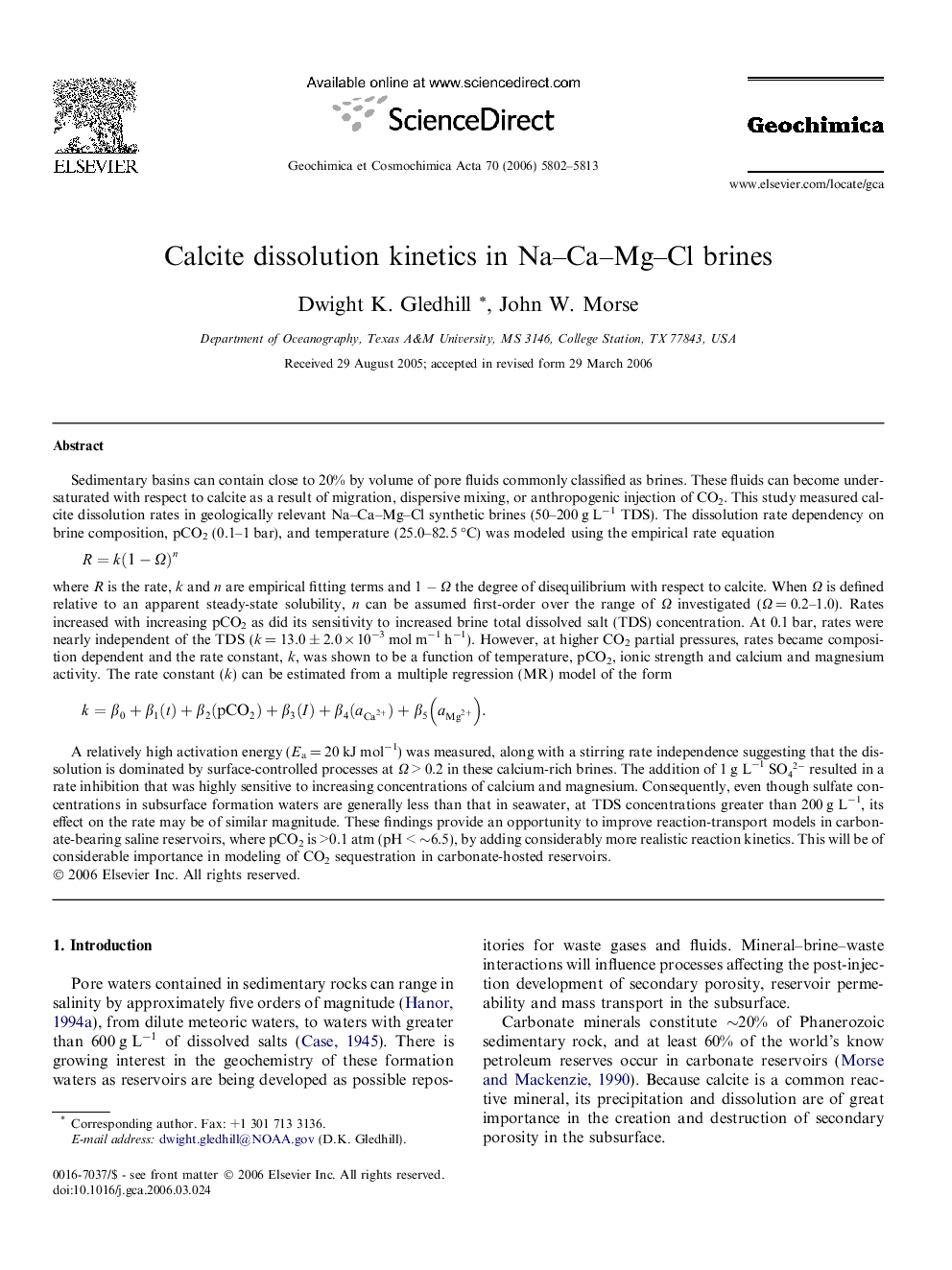| کد مقاله | کد نشریه | سال انتشار | مقاله انگلیسی | نسخه تمام متن |
|---|---|---|---|---|
| 4704649 | 1352922 | 2006 | 12 صفحه PDF | دانلود رایگان |

Sedimentary basins can contain close to 20% by volume of pore fluids commonly classified as brines. These fluids can become undersaturated with respect to calcite as a result of migration, dispersive mixing, or anthropogenic injection of CO2. This study measured calcite dissolution rates in geologically relevant Na–Ca–Mg–Cl synthetic brines (50–200 g L−1 TDS). The dissolution rate dependency on brine composition, pCO2 (0.1–1 bar), and temperature (25.0–82.5 °C) was modeled using the empirical rate equationR=k(1-Ω)nR=k(1-Ω)nwhere R is the rate, k and n are empirical fitting terms and 1 − Ω the degree of disequilibrium with respect to calcite. When Ω is defined relative to an apparent steady-state solubility, n can be assumed first-order over the range of Ω investigated (Ω = 0.2–1.0). Rates increased with increasing pCO2 as did its sensitivity to increased brine total dissolved salt (TDS) concentration. At 0.1 bar, rates were nearly independent of the TDS (k = 13.0 ± 2.0 × 10−3 mol m−1 h−1). However, at higher CO2 partial pressures, rates became composition dependent and the rate constant, k, was shown to be a function of temperature, pCO2, ionic strength and calcium and magnesium activity. The rate constant (k) can be estimated from a multiple regression (MR) model of the formk=β0+β1(t)+β2(pCO2)+β3(I)+β4(aCa2+)+β5(aMg2+).k=β0+β1(t)+β2(pCO2)+β3(I)+β4aCa2++β5aMg2+.A relatively high activation energy (Ea = 20 kJ mol−1) was measured, along with a stirring rate independence suggesting that the dissolution is dominated by surface-controlled processes at Ω > 0.2 in these calcium-rich brines. The addition of 1 g L−1SO42- resulted in a rate inhibition that was highly sensitive to increasing concentrations of calcium and magnesium. Consequently, even though sulfate concentrations in subsurface formation waters are generally less than that in seawater, at TDS concentrations greater than 200 g L−1, its effect on the rate may be of similar magnitude. These findings provide an opportunity to improve reaction-transport models in carbonate-bearing saline reservoirs, where pCO2 is >0.1 atm (pH < ∼6.5), by adding considerably more realistic reaction kinetics. This will be of considerable importance in modeling of CO2 sequestration in carbonate-hosted reservoirs.
Journal: Geochimica et Cosmochimica Acta - Volume 70, Issue 23, 1 December 2006, Pages 5802–5813